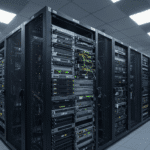An occasional series in which a review of recent posts on SmartData Collective reveals the following nuggets:
The right feedback
Often today, in our information saturated world, the problem isn’t getting feedback, but instead getting feedback in a way that it can be aggregated, managed and responded to in a reasonable fashion. Many of the current methods like email, forums, focus groups and forums simply don’t meet the needs effectively. Either the cost is too high, it’s hard to aggregate and manage, or it doesn’t scale.
Global supply chain responds faster
It would be interesting to know what the time lag was between Best Buy selling fewer plasma TVs and the drop in production of components in China, but I’ll bet it was a matter of days. We finally have a situation where the majority of companies in the supply chain have processes, information systems, trained professionals, and trading partner communications that allow the global supply chain to respond to change with astounding speed.
The sales challenge
An occasional series in which a review of recent posts on SmartData Collective reveals the following nuggets:
The right feedback
Often today, in our information saturated world, the problem isn’t getting feedback, but instead getting feedback in a way that it can be aggregated, managed and responded to in a reasonable fashion. Many of the current methods like email, forums, focus groups and forums simply don’t meet the needs effectively. Either the cost is too high, it’s hard to aggregate and manage, or it doesn’t scale.
Global supply chain responds faster
It would be interesting to know what the time lag was between Best Buy selling fewer plasma TVs and the drop in production of components in China, but I’ll bet it was a matter of days. We finally have a situation where the majority of companies in the supply chain have processes, information systems, trained professionals, and trading partner communications that allow the global supply chain to respond to change with astounding speed.
The sales challenge
The human side of data quality
Sometimes, people doubt that data quality problems could be prevalent in their systems. This “data denial” is not necessarily a matter of blissful ignorance, but is often a natural self-defense mechanism from the data owners on the business side and/or the process owners on the technical side. No one likes to feel blamed for causing or failing to fix the data quality problems. This is one of the many human dynamics that is missing from the relative clean room of the laboratory where the technology was developed. You must consider the human factor because it will be the people involved in the project, and not the technology itself, that will truly make the project successful.
Don’t blur the lines
SOA is certainly a valuable tool in the architecture and development toolbox; however, I think it’s only fair to keep SOA in perspective. It’s an evolutionary technology in IT that has numerous benefits to developer productivity and application connectivity. I’m not sure that injecting SOA into a data warehouse environment or framework will do anything more than freshen a few low-level building blocks that have been neglected in some data warehouse environments. I’m certainly not challenging the value of SOA; I’m just trying to put in perspective to those folks that are focused on data warehouse and business intelligence activities.
Monitoring Bay Area environmental data
Another example of a web dashboard built using R comes from John Oram, a scientist at the San Francisco Estuary Institute. SFEI collects and monitors environmental data from the waters and wetlands of the Bay Area. By sampling the waters, sediments and fish of the San Francisco Bay and testing for toxins, pollutants and other hazards, they monitor the health of the environment for Bay Area residents. Making sense of such data could be a challenge: how do you translate random point-samples of pollutants taken over a long period of time into an overall picture of the environmental impact? John Oram has met this challenge in two ways: by linking the point data to a Google map of the region, where you can see the individual measurements in context; and by using Kriging analysis and contour charts from R to extrapolate those samples to the entire Bay.
Start with a great product
Of course there’s a need to make prospective customers aware that your product or service exists. But you should be investing the lion’s share of money, time, and effort into making the product worth buying, rather than in persuading people to buy it. I realize that’s about as idealistic as “if you build it, they will come“, but that ideal is increasingly achievable in a world where information travels at the speed of Twitter.






